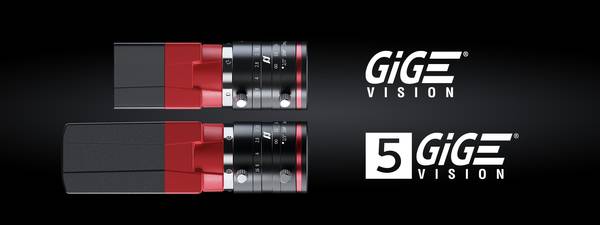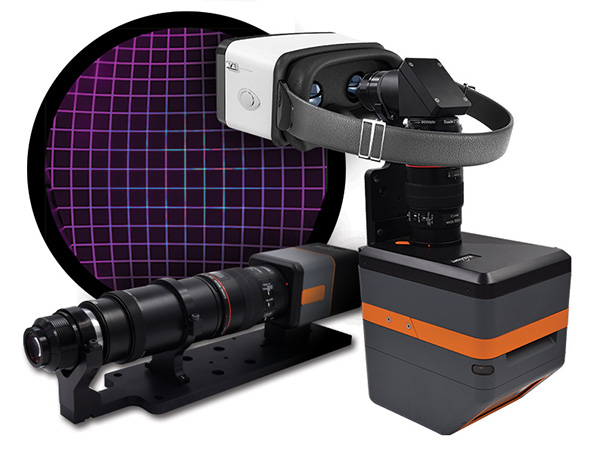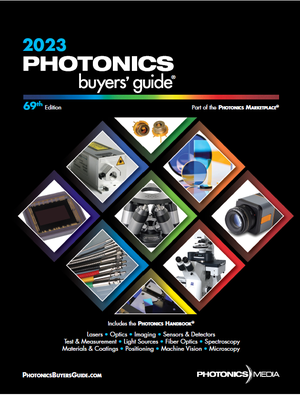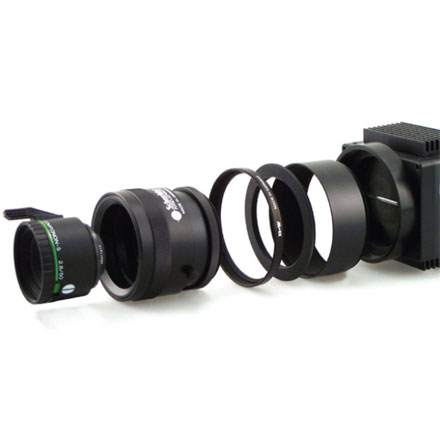
< More Imaging NewsletterSubscribe to our E-NewslettersSpatiotemporal OCT Boosts Ophthalmological Imaging; Speckles and Structural Color Key Advances (3/14/2023)
Spatiotemporal OCT Boosts Ophthalmological Imaging; Speckles and Structural Color Key Advances
The latest news, features, and product developments in imaging components and systems – brought to you by Photonics Media.
| If you are having problems seeing this newsletter, please click here to view |

|
The latest news, features, and product developments in imaging components and systems – brought to you by Photonics Media. Manage your Photonics Media membership at Photonics.com/subscribe.
|
Lidar Methods Combine for Nonmechanical, Compact Solution
In a newly developed lidar system, researchers at Kyoto University integrated 3D flash and beam-scanning laser light sources to create a 3D, nonmechanical lidar system. The system can measure the distance of poorly reflective objects in the field of view (FOV) and automatically track the motion of these objects — a capability not found in conventional lidar, and one that will enable autonomous vehicles to drive more safely, the researchers said.
|
|
|
|
|
Spatiotemporal OCT Method Advances Ophthalmological Imaging
Spatio-Temporal Optical Coherence Tomography (STOC-T), an ophthalmological imaging technique originally invented to capture optoretinograms, has been enhanced by its developers at the International Centre for Translational Eye Research (ICTER) to enable views of the retina and choroid at different depths.
|
|
|
|
High-Speed Single-Pixel Camera Streams in Real Time at 100 FPS
The speed of most single-pixel imaging (SPI) systems is hampered by the refresh rates of digital micromirror devices (DMDs) and the time-consuming iterations of compressed-sensing (CS)-based reconstruction. The data acquisition rate of most SPI systems is limited to below the megahertz bandwidths of typical photodetectors, due to the kilohertz pattern refresh rates of DMDs. Consequently, the 2D imaging speed in most SPI systems is ultimately restricted to under 100 frames per second (fps). Now, Researchers at INRS in Quebec have developed an SPI system that overcomes these limitations to speed to stream real-time video at 100 fps, and up to 12,000 fps offline.
|
|
|
|
 New Alvium G1 and G5 Series
New Alvium G1 and G5 Series
Allied Vision Technologies GmbH
Allied Vision has expanded its portfolio with two new GigE cameras powered by ALVIUM Technology, Allied Vision's ASIC chip. The Alvium G1 and Alvium G5 combine the advantages of the established GigE Vision standard with the flexibility of the Alvium platform.
|
|
|
 High-Speed Data Transfer
High-Speed Data Transfer
Teledyne DALSA, Machine Vision OEM Components
The new Falcon4-CLHS 37M and 67M models deliver higher resolution, added functionality and ease of use with a CLHS interface. These models can reach multiple thousands of frames per second in either partial scan mode, or when using the Multi-ROI mode, with up to 32 distinct regions of interest.
|
|
|
|
|
| |
 Electronic Focus for XR Display Testing
Electronic Focus for XR Display Testing
Radiant Vision Systems, Test & Measurement
The XRE Lens is a game-changer for evaluating visual quality of displays through XR headsets. Measure brightness, color, and image quality across 70° horiz. FOV and adjust electronic focus via software for multiple focal planes. Available in folded (“periscope”) and non-folded configurations.
|
|
|
 The 2023 Photonics Buyers’ Guide
The 2023 Photonics Buyers’ Guide
Photonics Media
The 2023 edition is now available with over 4000 companies, 1600 product categories, and 30 Handbook articles. Use coupon code HP23 for a special offer!
|
|
|
|
|
| |
|
With the continued miniaturization of electronic and photonic devices, tools to examine the behavior of free electrons, simultaneously at the picosecond-time and nanometer-length scales, have become necessary. Now, A method developed by researchers at the University of California, Berkeley is poised to allow more effective measurement of these electrons, opening paths to better energy efficiency. The researchers developed what they described as a new type of optical nanoscopy to measure electron dynamics in semiconductors.
|
|
Researchers from the National Institute for Materials Science (Japan), Harvard University, and the University of Connecticut jointly designed and fabricated a device for imaging a gas injected into it, in multiple colors and in accordance with its gaseous properties, enabling chromatic discrimination of different gases. The device converts the pressure generated by an injected gas into structural color, thereby “imaging” it.
|
|
Researchers at the University of North Carolina (UNC) School of Medicine combined fiber photometry with functional magnetic resonance imaging (fMRI) to examine the dynamic activity of brain regions related to the brain’s default mode network (DMN). With the help of Stanford University scientists — and advanced computational modeling — the researchers obtained results that could provide a more informed model for translational studies.
|
|
Imaging through a light-scattering medium, such as clouds in the sky or tissues in the body, poses special challenges. The scattered light must be reconstructed, typically by using complex optical elements in an environment that is vulnerable to motion and mechanical instability. Computational algorithms are then able to post-process the detected light to generate an image.
|
|
BrightEyes-TTM, an open-source time-tagging module (TTM) developed at the Italian Institute of Technology (IIT), enables scientists to observe the dynamic processes of molecules inside living cells over time, at a thousandth of a millisecond scale. BrightEyes-TTM can be used to study the variations that occur at the cellular level when a healthy cell becomes diseased.
|
|
 Understanding the Modulation Transfer Function and Beginning the Lens Selection Process
Understanding the Modulation Transfer Function and Beginning the Lens Selection Process
Tue, Mar 21, 2023 1:00 PM - 2:00 PM EDT
Stuart Singer of Schneider Optics, Inc. discusses how to understand the modulation transfer function (MTF) with respect to lens performance, while avoiding complex math such as fast Fourier transforms. The MTF is often the most important aspect of a lens because it shows how well a lens is able to reproduce the object within its view. Singer shares the steps that are needed to begin selecting a proper lens that meets specific imaging and system requirements. Finally, he details which lenses are appropriate for various imaging systems. Sponsored by Optikos Corporation and Navitar Inc.
|
|
|
|
|
|
